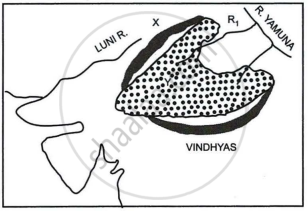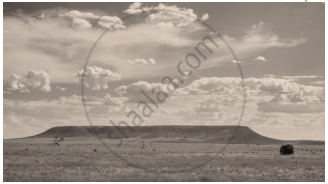Advertisements
Advertisements
प्रश्न
Mention any two characteristics features of the Himalayas.
उत्तर
The Himalayas are known for the following features:
- Height: At 8,848 meters (29,029 feet) above sea level, Mount Everest leads the Himalayas, the world's highest mountain range. The peaks here average almost 6000 meters in height. They experience heavy snowfall during the winter months due to their high altitude. As a result, glaciers are formed, which is crucial for the surrounding areas' water supply.
- Glaciers and River Source: Some of the world's largest glaciers, including the Siachen and Gangotri Glaciers, are found in the Himalayas. The Ganga, Indus, and Brahmaputra rivers, among many other significant rivers, rely heavily on the countless glaciers found in the Himalayas for their freshwater supply. This is one of the reasons why there is water in the rivers that come from the Himalayas all year round.
- Importance to regional climate: In the north, the Himalayas form a towering barrier shaped like an arc. Their influence on the monsoon season and the formation of distinct weather patterns in the surrounding areas has a noteworthy effect on the regional climate. During the monsoon season, they cause heavy rainfall on the southern slopes of the Himalayas by blocking the monsoon winds that bring rain from the southern oceans. Rainfall is necessary for the growth of vegetation and crops.
- Biodiversity: A vast array of rare and endangered species, including the snow leopard, Himalayan musk deer, and red panda, can be found in the Himalayas.
- Cultural significance: The Himalayas hold great religious and cultural significance, as evidenced by the presence of numerous significant locations such as Mount Kailash and the temples of Badrinath and Kedarnath. In addition, there are a lot of Buddhist monasteries in the Himalayas. There are numerous significant pilgrimage sites in the Himalayas.
Notes
Student can refer to the provided solution based on their prefer marks.
APPEARS IN
संबंधित प्रश्न
Give reasons for the following
(i) There is a dense network of railways over the North Indian Plains.
(ii) Peninsular Plateau has a high proportion of metalled roads.
(iii) A good transport network promotes industrial development.
Answer the following question:
The figure below represents a topographic section from the Himalayas to the Peninsular region. Identify any two of the features marked A, B, C, and D.
Answer the following question:
Briefly explain the geological evolution of the peninsular plateau.
(i) Where is the New Mangalore Port located?
(ii) What is the chief importance of this port?
Name the following :
A historic place in Rajasthan.
The main Standard geological era is ______.
Study the sketch map given below and answer the questions that follow:

- Identify the dotted region marked Y. Mention any three of its characteristic features.
- Name the mountain range marked X, the river marked R1 and the type of rock that constitutes the dotted region.
Assertion: The Himalayas were formed due to the collision of tectonic plates.
Reason: Indian plate moved northwards and pushed beneath the Eurasian Plate leading to the compression of sediments in the Tethys Sea.
India is referred to as a sub-continent. Justify.
Identify the image given below and explain the formation of this geological division in India.

